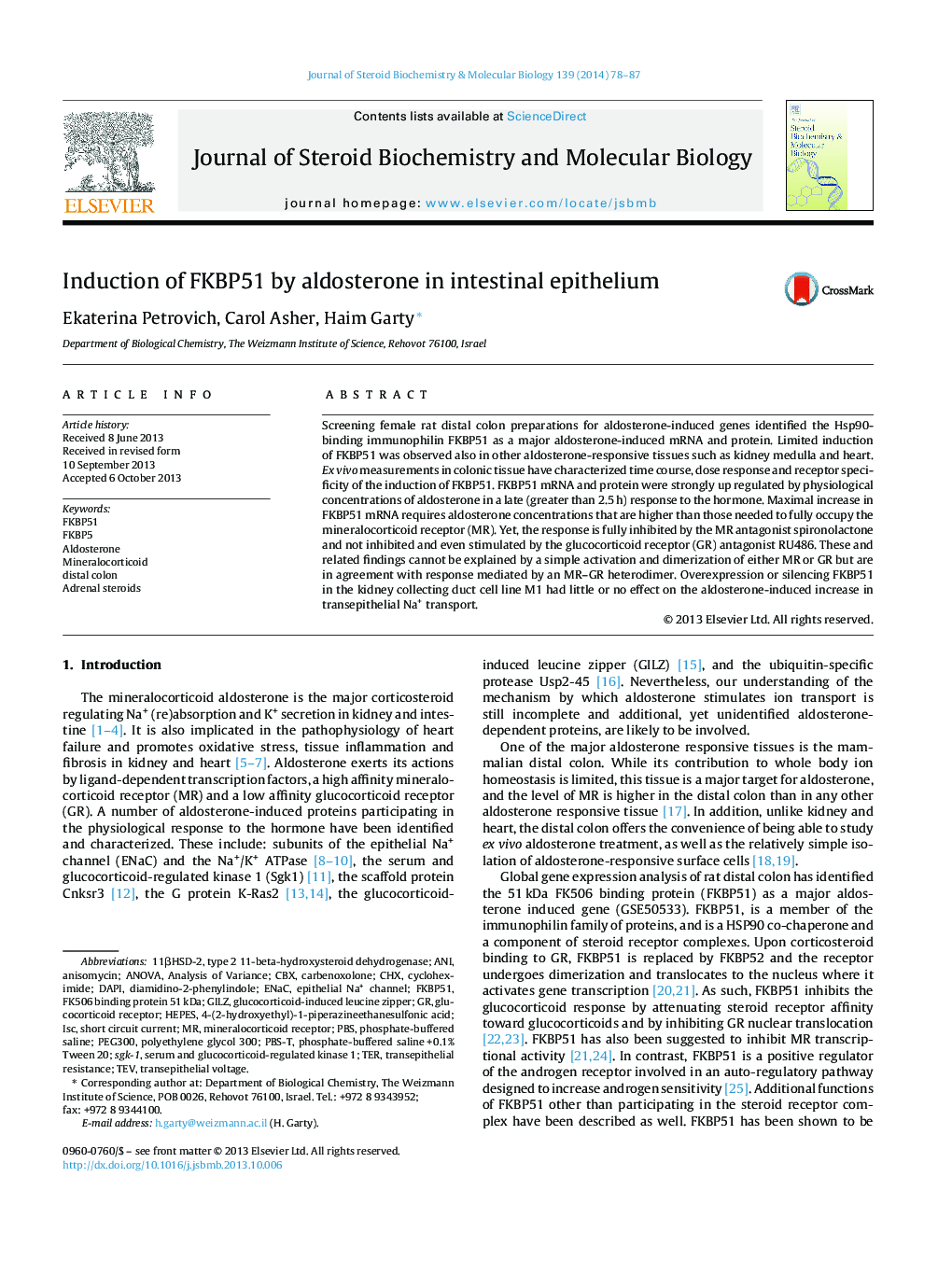| Article ID | Journal | Published Year | Pages | File Type |
|---|---|---|---|---|
| 1991543 | The Journal of Steroid Biochemistry and Molecular Biology | 2014 | 10 Pages |
•FKBP51 is strongly induced in rodent distal colon by aldosterone.•Occupancy of both MR and GR appear to be essential for FKBP51 induction.•FKBP51 does not influence the aldosterone induced Na+ transport in M1 cells.•The induction of FKBP51 appears to increase MR stability.
Screening female rat distal colon preparations for aldosterone-induced genes identified the Hsp90-binding immunophilin FKBP51 as a major aldosterone-induced mRNA and protein. Limited induction of FKBP51 was observed also in other aldosterone-responsive tissues such as kidney medulla and heart. Ex vivo measurements in colonic tissue have characterized time course, dose response and receptor specificity of the induction of FKBP51. FKBP51 mRNA and protein were strongly up regulated by physiological concentrations of aldosterone in a late (greater than 2.5 h) response to the hormone. Maximal increase in FKBP51 mRNA requires aldosterone concentrations that are higher than those needed to fully occupy the mineralocorticoid receptor (MR). Yet, the response is fully inhibited by the MR antagonist spironolactone and not inhibited and even stimulated by the glucocorticoid receptor (GR) antagonist RU486. These and related findings cannot be explained by a simple activation and dimerization of either MR or GR but are in agreement with response mediated by an MR–GR heterodimer. Overexpression or silencing FKBP51 in the kidney collecting duct cell line M1 had little or no effect on the aldosterone-induced increase in transepithelial Na+ transport.
